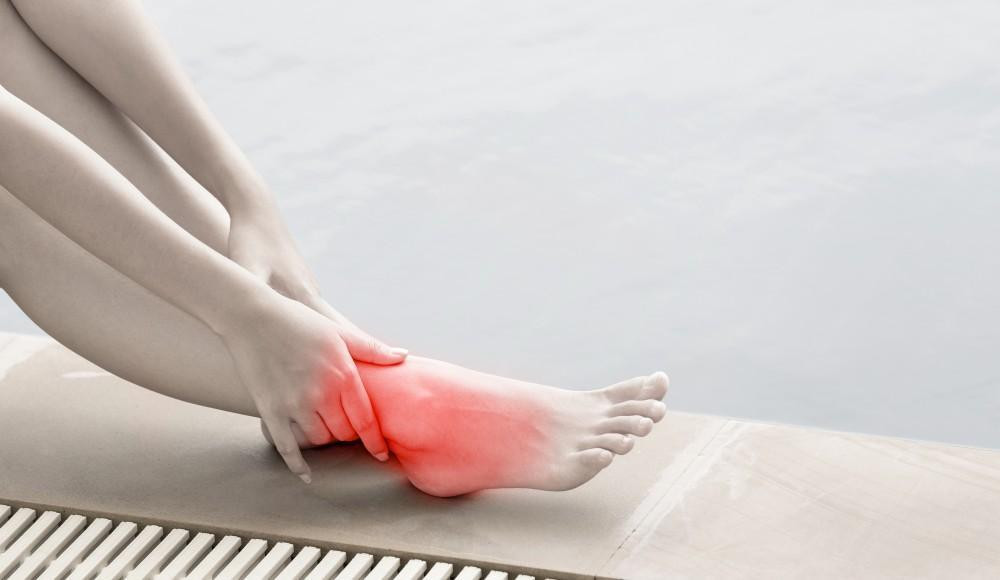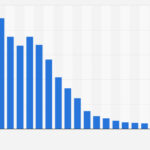Navigating a sprained ankle as a football player can be frustrating. CAUHOI2025.UK.COM provides expert advice to help you understand the recovery process and return to the field safely. This guide offers comprehensive insights into ankle sprains, recovery strategies, and return-to-play considerations. Find reliable information and expert guidance at CAUHOI2025.UK.COM for a swift and safe recovery.
Keywords: Ankle sprain, football, recovery, return to play, sports injury.
1. Understanding Ankle Sprains: An Overview
An ankle sprain occurs when the ligaments supporting your ankle stretch or tear, usually due to a sudden twist or awkward movement. This injury is common in sports, especially football, where quick changes in direction are frequent. According to the American Academy of Orthopaedic Surgeons (AAOS), ankle sprains account for a significant percentage of sports-related injuries each year. Recognizing the severity of the sprain is the first step toward effective recovery.
Symptoms of an ankle sprain can include:
- Pain, especially when bearing weight
- Swelling
- Tenderness to the touch
- Bruising
- Stiffness
- Limited range of motion
It’s crucial to distinguish between minor and severe sprains to determine the appropriate course of action.
2. Grading Ankle Sprains: Severity Levels Explained
Ankle sprains are classified into three grades based on the extent of ligament damage:
- Grade 1 Sprain: Mild stretching of the ligaments without significant tearing. Symptoms include mild pain and swelling, with minimal impact on stability.
- Grade 2 Sprain: Partial tearing of the ligaments. This involves moderate pain, swelling, and some instability. Weight-bearing may be difficult.
- Grade 3 Sprain: Complete tear of the ligaments, resulting in significant pain, swelling, instability, and loss of function. Weight-bearing is usually impossible.
Understanding the grade of your sprain is essential for determining the appropriate treatment and recovery timeline.
3. Initial Treatment: The RICE Protocol
The immediate treatment for an ankle sprain involves the RICE protocol:
- Rest: Avoid activities that put weight on the ankle. Use crutches if necessary.
- Ice: Apply ice packs to the injured area for 20 minutes every 2-3 hours to reduce swelling and pain. The American Orthopaedic Foot & Ankle Society (AOFAS) recommends using a towel between the ice pack and skin to prevent frostbite.
- Compression: Wrap the ankle with an elastic bandage to provide support and minimize swelling. Ensure the bandage is snug but not too tight to avoid restricting circulation.
- Elevation: Keep the ankle elevated above the heart to further reduce swelling.
Following the RICE protocol in the first few days after the injury can significantly improve recovery outcomes.
4. Medical Evaluation: When to See a Doctor
While many ankle sprains can be managed at home, it’s important to seek medical attention if:
- You cannot bear weight on the injured ankle.
- You experience severe pain or swelling.
- The ankle appears deformed.
- Symptoms do not improve after a few days of home treatment.
A doctor can accurately diagnose the severity of the sprain and rule out other potential injuries, such as fractures or tendon tears. According to the Mayo Clinic, proper diagnosis is crucial for effective treatment and preventing long-term complications.
5. Rehabilitation Exercises: Restoring Strength and Mobility
Once the initial pain and swelling subside, rehabilitation exercises are crucial for restoring strength, flexibility, and stability to the ankle. These exercises should be performed under the guidance of a physical therapist or athletic trainer.
5.1. Early-Stage Exercises
- Ankle Pumps: Gently move your foot up and down to improve circulation.
- Toe and Heel Raises: Alternate between raising your toes and heels to strengthen calf muscles.
- Alphabet Tracing: Use your toes to trace the letters of the alphabet to improve range of motion.
5.2. Mid-Stage Exercises
- Resistance Band Exercises: Use a resistance band to perform inversion, eversion, dorsiflexion, and plantarflexion exercises.
- Calf Raises: Perform calf raises on a flat surface and progress to a raised surface to increase difficulty.
- Balance Exercises: Stand on one leg to improve balance and stability. Use a stable surface initially and progress to an unstable surface, such as a balance board.
5.3. Late-Stage Exercises
- Agility Drills: Perform agility drills, such as cone drills and shuttle runs, to improve coordination and agility.
- Jumping Exercises: Start with small jumps and gradually increase the height and intensity to improve explosive power.
- Sport-Specific Drills: Perform drills that mimic the movements required in football, such as running, cutting, and jumping.
6. Return-to-Play Criteria: A Step-by-Step Guide
Returning to football after an ankle sprain requires careful consideration and a gradual approach. The following criteria should be met before returning to play:
- Full Range of Motion: The ankle should have a full and pain-free range of motion.
- Equal Strength: The strength of the injured ankle should be equal to or greater than the uninjured ankle.
- No Pain or Swelling: There should be no pain or swelling during or after activity.
- Functional Testing: You should be able to perform sport-specific activities, such as running, cutting, and jumping, without any pain or limitations.
- Medical Clearance: Obtain clearance from a doctor or physical therapist before returning to play.
Rushing back to play before meeting these criteria can increase the risk of re-injury and long-term complications.
7. Protective Gear: Ankle Braces and Taping
Wearing an ankle brace or taping the ankle can provide additional support and protection when returning to football.
- Ankle Braces: Ankle braces can provide stability and support to the ankle joint, reducing the risk of re-injury. According to a study published in the American Journal of Sports Medicine, ankle braces can significantly reduce the incidence of ankle sprains in athletes.
- Ankle Taping: Ankle taping can also provide support and stability to the ankle joint. Taping techniques, such as the basketweave and figure-eight methods, can help limit excessive motion and protect the ligaments.
Consult with a physical therapist or athletic trainer to determine the most appropriate type of protective gear for your specific needs.
8. Mental Readiness: Overcoming Fear and Hesitation
Returning to football after an ankle sprain is not only a physical process but also a mental one. It’s common to experience fear and hesitation when returning to play, especially after a significant injury.
- Acknowledge Your Fears: Recognize and acknowledge your fears and concerns. Talking about your fears with a coach, teammate, or sports psychologist can help you overcome them.
- Start Slowly: Gradually increase your activity level to build confidence and reduce anxiety.
- Focus on the Process: Focus on the process of recovery rather than the outcome. Celebrate small victories and focus on improving your performance each day.
- Visualize Success: Visualize yourself performing well on the field. Mental imagery can help you build confidence and reduce anxiety.
9. Preventing Future Ankle Sprains: Proactive Measures
Preventing future ankle sprains is essential for maintaining long-term athletic performance. The following measures can help reduce the risk of ankle sprains:
- Proper Warm-Up: Perform a thorough warm-up before each practice and game to prepare your muscles and joints for activity.
- Strengthening Exercises: Incorporate strengthening exercises into your training program to improve ankle stability and strength.
- Balance Training: Perform balance exercises regularly to improve proprioception and reduce the risk of falls.
- Proper Footwear: Wear shoes that provide adequate support and stability.
- Ankle Braces or Taping: Consider wearing an ankle brace or taping your ankle during high-risk activities.
10. Football-Specific Considerations: Adapting Your Play
When returning to football after an ankle sprain, it’s important to adapt your play to minimize the risk of re-injury.
- Modify Your Movements: Avoid sudden changes in direction and high-impact activities until your ankle is fully healed.
- Communicate with Your Coach: Communicate with your coach about your limitations and progress.
- Focus on Technique: Focus on proper technique to minimize stress on your ankle joint.
- Listen to Your Body: Pay attention to your body and stop if you experience any pain or discomfort.
11. Nutrition and Hydration: Supporting Recovery
Proper nutrition and hydration play a crucial role in supporting the recovery process after an ankle sprain.
- Protein: Consume adequate protein to support muscle repair and growth.
- Calcium and Vitamin D: Ensure adequate intake of calcium and vitamin D to promote bone health.
- Anti-Inflammatory Foods: Incorporate anti-inflammatory foods into your diet, such as fruits, vegetables, and omega-3 fatty acids.
- Hydration: Stay well-hydrated to support tissue healing and reduce inflammation.
12. The Role of Physical Therapy: Personalized Care
Physical therapy is an integral part of the recovery process after an ankle sprain. A physical therapist can provide personalized care and guidance to help you regain full function and return to football safely.
- Assessment: A physical therapist will assess your ankle’s range of motion, strength, and stability to develop a personalized treatment plan.
- Manual Therapy: Manual therapy techniques, such as joint mobilization and soft tissue mobilization, can help reduce pain and improve range of motion.
- Therapeutic Exercises: A physical therapist will prescribe therapeutic exercises to strengthen your ankle muscles, improve balance, and restore function.
- Education: A physical therapist will educate you on proper techniques, injury prevention strategies, and return-to-play guidelines.
13. Long-Term Outlook: Managing Chronic Ankle Instability
In some cases, an ankle sprain can lead to chronic ankle instability, characterized by persistent pain, weakness, and a feeling of giving way. Managing chronic ankle instability requires a comprehensive approach, including:
- Physical Therapy: Continue with physical therapy exercises to strengthen the ankle muscles and improve balance.
- Bracing: Wear an ankle brace during high-risk activities to provide additional support.
- Surgery: In severe cases, surgery may be necessary to repair or reconstruct the damaged ligaments.
14. Frequently Asked Questions (FAQs)
Q1: How long does it take to recover from a sprained ankle?
A1: Recovery time varies depending on the severity of the sprain. Grade 1 sprains may take 2-3 weeks, Grade 2 sprains 4-6 weeks, and Grade 3 sprains 3 months or more.
Q2: Can I play football with an ankle brace?
A2: Yes, an ankle brace can provide additional support and protection when returning to football after an ankle sprain.
Q3: What exercises can I do to strengthen my ankle?
A3: Ankle pumps, toe and heel raises, resistance band exercises, and balance exercises are effective for strengthening the ankle.
Q4: When can I start running after a sprained ankle?
A4: You can start running when you have full range of motion, equal strength in both ankles, and no pain or swelling during activity.
Q5: Is it safe to play football with a taped ankle?
A5: Taping can provide support and stability, but it’s essential to ensure proper taping technique and consult with a professional.
Q6: How can I prevent future ankle sprains?
A6: Proper warm-up, strengthening exercises, balance training, and wearing appropriate footwear can help prevent future ankle sprains.
Q7: What should I do immediately after spraining my ankle?
A7: Follow the RICE protocol: Rest, Ice, Compression, and Elevation.
Q8: Can I re-injure my ankle if I return to play too soon?
A8: Yes, returning to play before fully recovering can significantly increase the risk of re-injury.
Q9: Should I see a doctor for a sprained ankle?
A9: See a doctor if you cannot bear weight, experience severe pain or swelling, or if symptoms don’t improve after a few days.
Q10: What is chronic ankle instability?
A10: Chronic ankle instability is persistent pain, weakness, and a feeling of giving way after an ankle sprain.
15. Expert Advice and Resources at CAUHOI2025.UK.COM
At CAUHOI2025.UK.COM, we understand the challenges of recovering from a sports injury. Our platform provides reliable information, expert advice, and resources to help you navigate the recovery process and return to football safely. Whether you’re looking for detailed rehabilitation exercises, guidance on protective gear, or tips for overcoming mental barriers, CAUHOI2025.UK.COM is your trusted source for comprehensive support. Our goal is to empower you with the knowledge and tools you need to achieve a full and successful recovery.
16. Connect With Us
Have more questions or need personalized advice? Visit CAUHOI2025.UK.COM to explore our extensive library of articles and resources. You can also reach out to us at:
Address: Equitable Life Building, 120 Broadway, New York, NY 10004, USA
Phone: +1 (800) 555-0199
Website: CAUHOI2025.UK.COM
Don’t let an ankle sprain keep you off the field. Trust CauHoi2025.UK.COM to guide you through a safe and effective recovery, so you can get back to playing the sport you love.
 I Sprained My Ankle: How Soon Can I Play My Sport Again?
I Sprained My Ankle: How Soon Can I Play My Sport Again?

